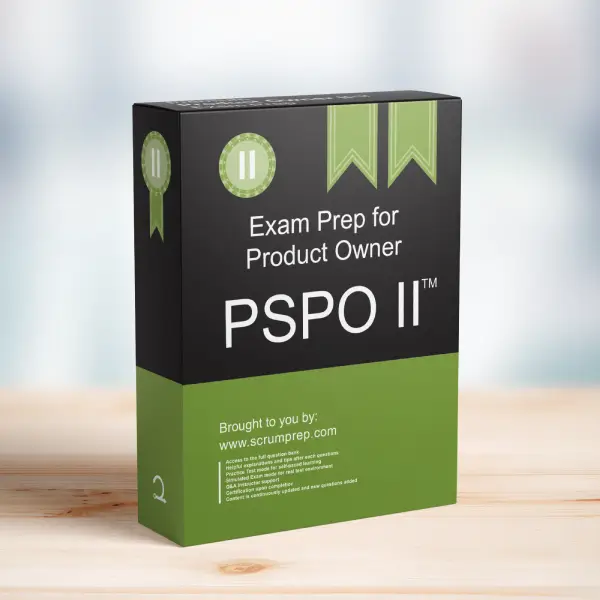Understanding the Product Owner Role
The role of the Product Owner is crucial in Scrum, ensuring that the product maximizes value and aligns with stakeholder needs. This article delves into the core responsibilities and structure of the Product Owner role within a Scrum Team.
Exam Question
Which of the following are true about the Product Owner role?
(Choose the best three answers)
A. Multiple people can be the Product Owner on a Scrum Team.
B. The Product Owner is one person.
C. The Product Owner role can be played by a committee or a team of people.
D. The Product Owner is accountable for ordering the Product Backlog.
E. The Product Owner can be influenced by a committee.
Correct Answers
B. The Product Owner is one person.
D. The Product Owner is accountable for ordering the Product Backlog.
E. The Product Owner can be influenced by a committee.
Explanation
Correct Answers
B. The Product Owner is one person:
In Scrum, the Product Owner is a single individual responsible for maximizing the value of the product. Having one person accountable ensures clear decision-making and avoids confusion.
D. The Product Owner is accountable for ordering the Product Backlog:
The Product Owner’s primary responsibility is to manage the Product Backlog. This includes ordering the items to ensure that the most valuable work is prioritized, which maximizes the value delivered by the Scrum Team.
E. The Product Owner can be influenced by a committee:
While the Product Owner is one person, they can seek input and be influenced by a committee or stakeholders. However, the final decisions regarding the Product Backlog and product direction rest with the Product Owner.
Incorrect Answers
A. Multiple people can be the Product Owner on a Scrum Team:
Having multiple people as the Product Owner goes against Scrum principles. It can lead to conflicting priorities and unclear accountability, which hinders effective decision-making and prioritization.
C. The Product Owner role can be played by a committee or a team of people:
Similar to the previous point, a committee or team of people cannot collectively hold the Product Owner role. The Product Owner must be a single individual to ensure clear responsibility and accountability.
Responsibilities in Scrum
- Product Owner: Accountable for maximizing the product’s value by effectively managing and ordering the Product Backlog. They collaborate with stakeholders and the Scrum Team to ensure clarity and alignment on product goals.
- Scrum Master: Facilitates Scrum events and supports the Scrum Team in adhering to Scrum practices. They ensure that the Product Owner and Developers can work effectively.
- Developers: Responsible for delivering increments of value each Sprint. They work closely with the Product Owner to understand and implement the Product Backlog items.
Relevance to the PSPO II Exam
Understanding the structure and responsibilities of the Product Owner role is vital for the PSPO II exam. It highlights the importance of clear accountability and effective management of the Product Backlog, which are essential for successful product delivery in Scrum.
Key Takeaways
- The Product Owner is a single person accountable for maximizing the product’s value.
- The Product Owner manages and orders the Product Backlog.
- While influenced by stakeholders, the Product Owner makes the final decisions regarding the Product Backlog.
Conclusion
The Product Owner role is central to the success of a Scrum Team. By understanding that the Product Owner must be a single individual accountable for ordering the Product Backlog and maximizing value, teams can ensure clear decision-making and effective product management. For more information on preparing for the PSPO II exam, visit our PSPO II Exam Prep.



